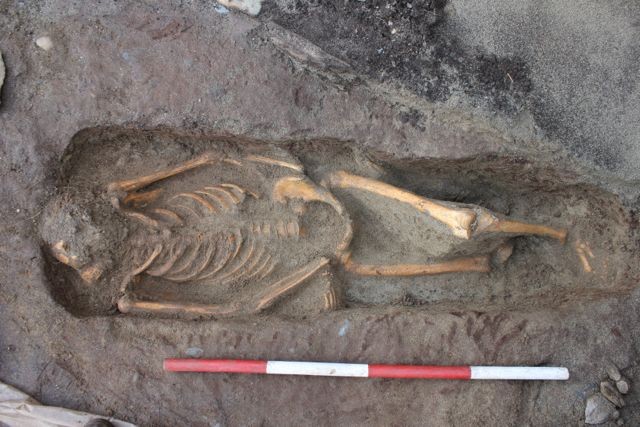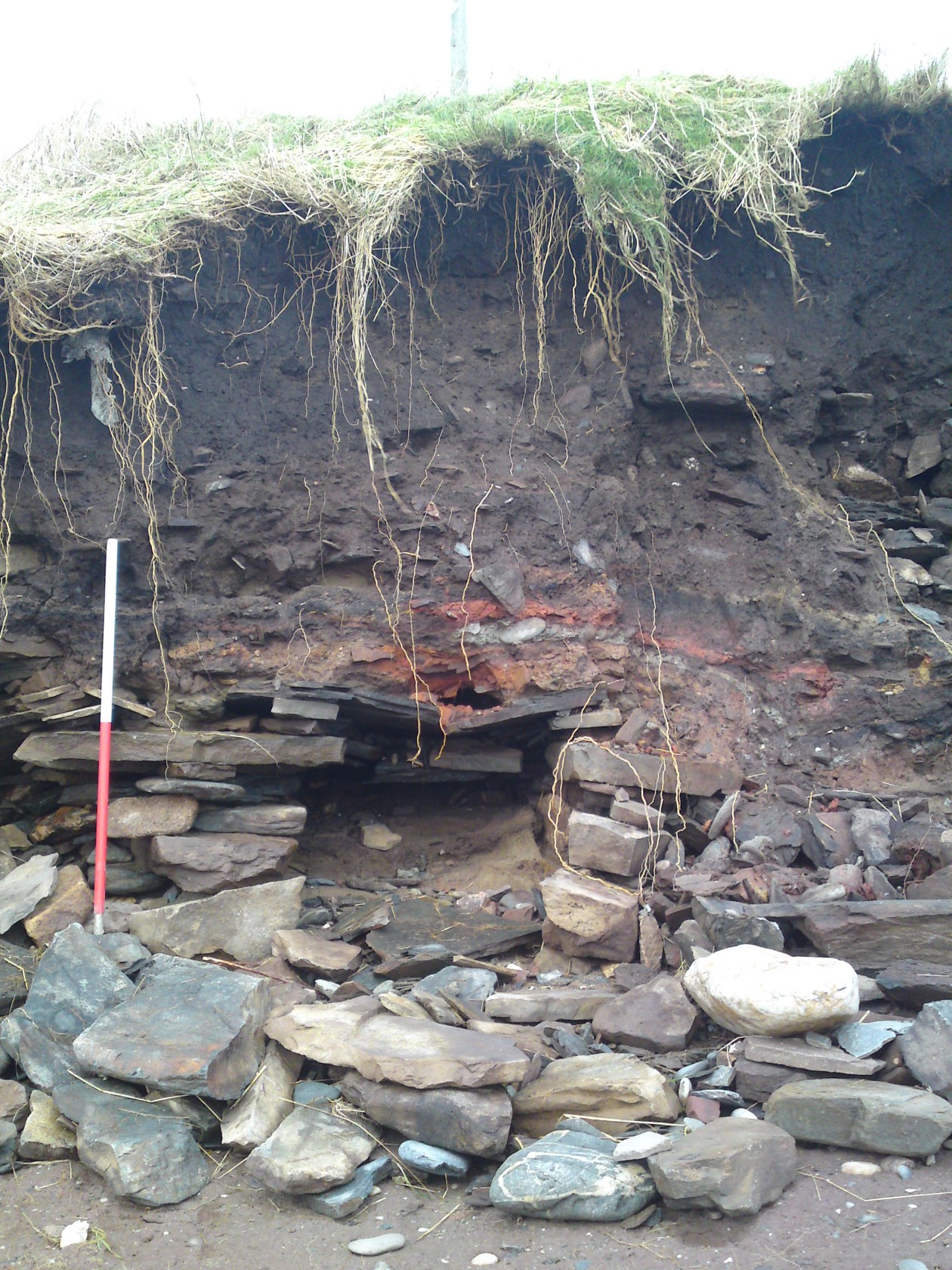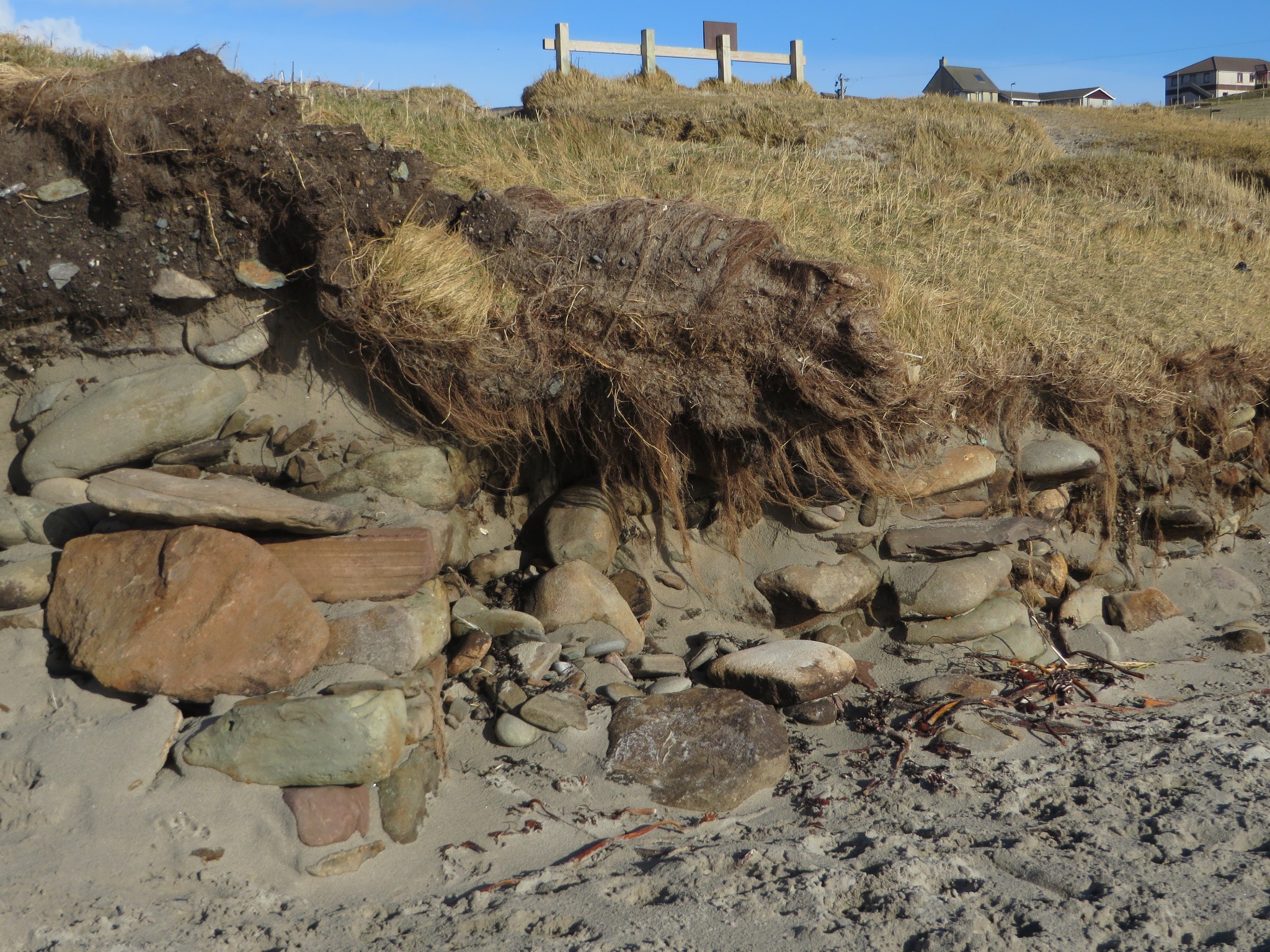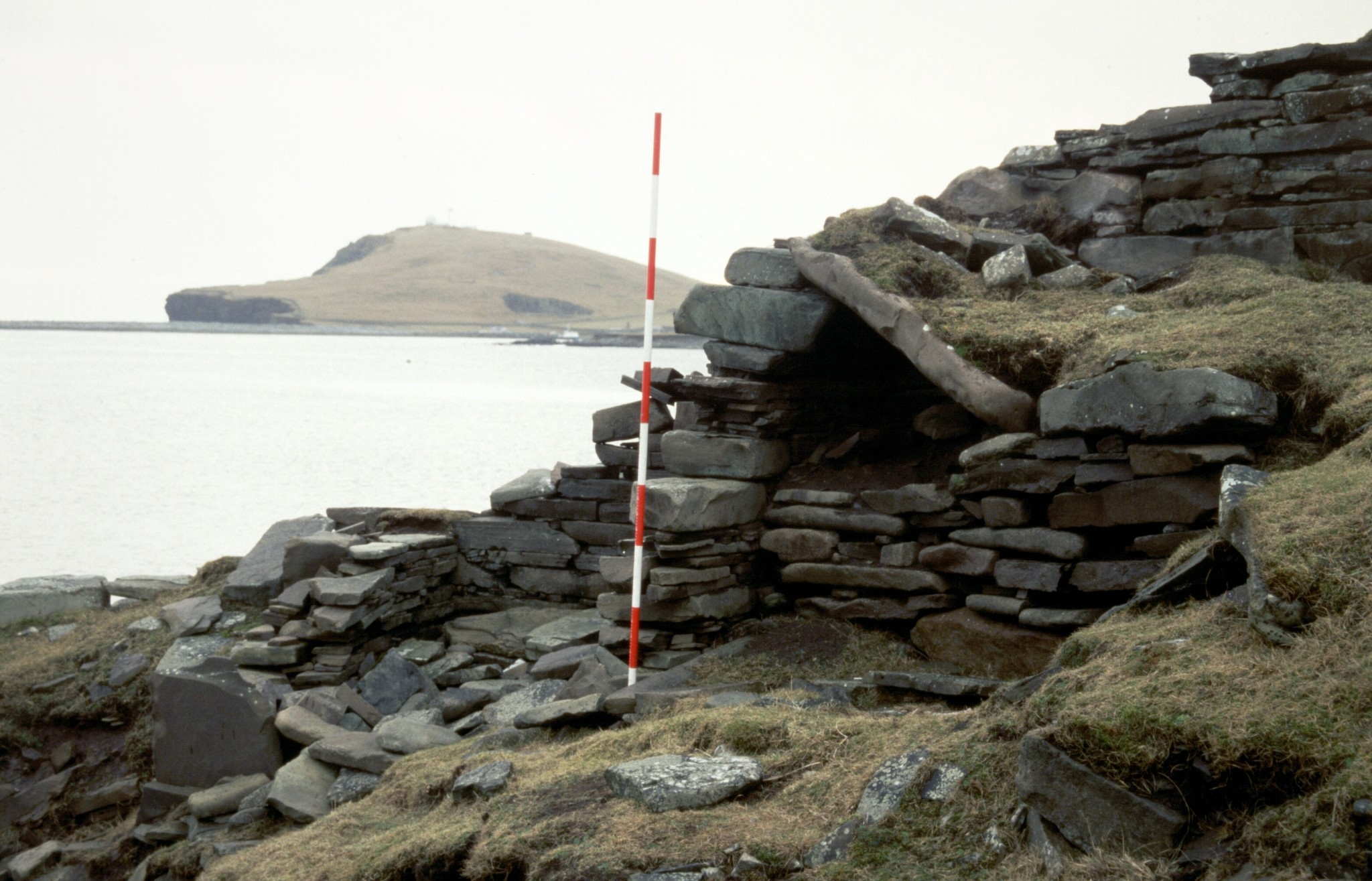Off the Beaten Track 4 - Our past emerging as the coast erodes
Published: 16 April 2020
It is frequently claimed that nowhere in Shetland is more than 3 miles from the coast. That means that many of us live close enough to take the daily exercise which the Government allows us in this time of lockedown - walking along the beach or below the banks. If you do that you will have noticed that the coastal edge is dynamic – it is always changing. The most dramatic changes occur during storms, but regular washing by the sea or even a burn, will change the landscape. If you walk there regularly, you could easily become the first person to discover a previously unknown archaeological site.
In the last few years there have been some well publicised new discoveries along the coastal edge, some of these are explored below.
Channerwick (HU 4048,2325)
 In December 2012, Channerwick resident Ewen Thomson, was walking along the beach below his house when he noticed that the recent south-westerly storms had uncovered human bone. Calling in first the police, and then Shetland Amenity Trust’s Assistant Archaeologist, Chris Dyer, it became clear that it was archaeological rather than recent. We then organised excavation which was carried out by Dr Samantha Dennis. She uncovered the skeleton of a man, squashed into a grave which wasn’t quite big enough for him, at the foot of the banks.
In December 2012, Channerwick resident Ewen Thomson, was walking along the beach below his house when he noticed that the recent south-westerly storms had uncovered human bone. Calling in first the police, and then Shetland Amenity Trust’s Assistant Archaeologist, Chris Dyer, it became clear that it was archaeological rather than recent. We then organised excavation which was carried out by Dr Samantha Dennis. She uncovered the skeleton of a man, squashed into a grave which wasn’t quite big enough for him, at the foot of the banks.
Although it was the skeleton that first drew our attention, we immediately realised that there were the remains of buildings further along the beach. They looked Late Iron Age (Pictish) and of course we had originally hoped that our skeleton would be of a similar age. Radiocarbon dating showed that he was more recent and had been buried between 1760 and 1820. He may have been a drowned sailor, but he may have been laid there because there was a (now collapsing) chapel, a short distance from the cliff edge, in use at the time.

Sands of Sound (HU 4640, 3990)

Well known eroding sites
 Some sites have been known to be eroding for a long time, although fortunately their loss has been quite slow. Brochs have been sliced through by the sea at Eastshore, behind the Dunrossness boating club, and at Sna Broch in Fetlar. The best-known example is the broch at Jarlshof. Jenny and Andy Bradley have known that they live just above an eroding prehistoric house at Gletness. One of Shetland’s earliest sites, at West Voe in Dunrossness, was only found because the sea has eroded the land it was in.
Some sites have been known to be eroding for a long time, although fortunately their loss has been quite slow. Brochs have been sliced through by the sea at Eastshore, behind the Dunrossness boating club, and at Sna Broch in Fetlar. The best-known example is the broch at Jarlshof. Jenny and Andy Bradley have known that they live just above an eroding prehistoric house at Gletness. One of Shetland’s earliest sites, at West Voe in Dunrossness, was only found because the sea has eroded the land it was in.
Sites that come and go
If you were sure that you spotted a site a while ago, and then can’t find it when you return, it’s probable that you are remembering correctly. I remember failing to find a site which was clearly recorded in Burra. Although it could have been washed away, in this case it seems that the sea had undermined the banks which had collapsed, concealing the site.
Most intriguing of all perhaps is a boat which last emerged from the beach in spring 2017. The wooden remains of a boat appeared on the tombolo at St Ninian’s Isles so briefly that I didn’t manage to see it. No-one knows which vessel this was, but a Facebook discussion at the time suggested this may have been the remains of a French vessel which, local stories say, was lost around the turn of the 20th century. An alternative view suggested that this was part of the Lovisa, wrecked in 1903 on South Havra. There are records of other vessels wrecked in the area and the remains could be from any of these, or indeed, from an unrecorded vessel. At present, the sands hold onto their secret. (Thanks to Michael Stratigos who remembers the discussion.)
We would love to be able to excavate all these sites, but unfortunately all that archaeologists are usually able to do is to clean and record the remains in section. Time and resources, and the fact that the sites often have at least a metre of sandy soil above them, makes full excavation impossible, at least for the moment.
Sometimes the evidence isn’t as obvious as either wood or a stone dyke. A red line of ash and charcoal in the exposed section, artefacts or a midden of shells, are all clues to the people who lived or feasted here long ago. They may not have been right on the coastal edge, but could have been tens of metres inland.
If you do find a new site, please do take lots of photos and send them to us. Then we can capture the site for Shetland’s Historic Environment Record, even if the site disappears again. The SCAPE Trust will also be keen to hear your news. If you include your details, once the lock down ends we can come out and have a look with you – provided your site hasn’t vanished again by then!
Regional Archaeologist, Val Turner of Shetland Amenity Trust, 17 April 2020
We hope you have enjoyed this blog.  We rely on the generous support of our funders and supporters to continue our work on behalf of Shetland. Everything we do is about caring for Shetland's outstanding natural and cultural heritage on behalf of the community and for future generations. Donations are welcomed and are essential to our work.
We rely on the generous support of our funders and supporters to continue our work on behalf of Shetland. Everything we do is about caring for Shetland's outstanding natural and cultural heritage on behalf of the community and for future generations. Donations are welcomed and are essential to our work.

